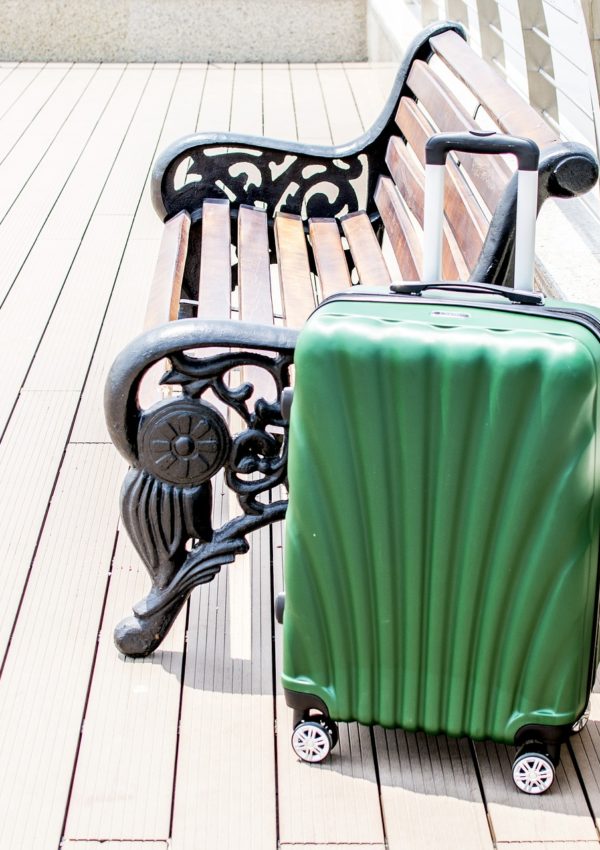
Our Experience…
There is so much to consider when it comes to protecting our little ones. As parents, our utmost goal is to ensure love, safety, and security to our kids. If there was at all any possible way for us to provide all their needs ourselves, I’m pretty sure we would.
Other times we must enlist the help of family, friends, and organizations. Leaving our kids to work may make our hearts sink, and if we must enroll them in daycare, most times, our comfort comes from seeing a clean, stimulating, and well-managed facility.
Our first attempt at putting Rossi in daycare at four months old was a complete failure. I had to return to work, and Ryan was already working fulltime, and our first attempt enlist a babysitter was unsuccessful. We found a great daycare facility! But we were not mentally or emotionally ready to send our baby out into the world.
Luckily enough, we found a babysitter at the last minute to care for Rossi while we were at work. After realizing all the things we took into consideration to find a suitable facility, I thought sharing this post may be useful for other mommies. So what are the areas to consider when searching for a daycare facility?
In this blog post, I will look at some of the areas that were most significant for us when choosing the right daycare.
Hours of Opening
Both our days start early and end late at times, so yes, we needed a facility that could accommodate our schedule. Most daycare facilities I found to be very flexible with their hours of opening. Having that flexibility makes the situation less stressful, and you make even be able to slip in a few errands if the need arises.
Most times, the staffing schedule in daycares is staggered, where you’ll have a group of teachers coming early and leave early or coming in late and leave late. Be sure to out the facility’s policy on late picks.
For example, some facilities charge for every 5 or 10 minutes or more for which you are late at a specified rate. The cost is added to your child’s account to be paid by parents to provide compensation to teachers who stay until after pick up hours. The late pickup penalty was standard for a lot of daycares. You can never know when you will be running late; this is an excellent option to have available.
Location
Is your daycare of choice within a central location to work and or home?
Choose a daycare that is en route to work or home can reduce the number of hours you will spend traveling and or stuck in traffic. A location that is close to home will allow you to get the facility promptly in the event you have to drop off snacks, school projects, changes of clothes, or emergencies.
Your day will also be a whole more organized having most, or all your stops in the same direction. You will undoubtedly feel way more relaxed, not having to struggle through traffic in the opposite direction to get to your destination.
Additionally, consider neighborhood safety. Is the location of an incident prone area? Admittedly, the security of your child is a top priority.

Children to Staff Ratio
By law, daycares follow set children to staffing ratio determined by early childhood governing bodies. As anyone can imagine, babies require much closer attention as such their classes often have three up to five per staff. Four babies per staff are relatively reasonable.
Considering how delicate babies are, their developing system makes them more vulnerable to infection. They should undoubtedly benefit from low baby to staff ratio. Often eight or more toddlers are assigned per staff. Toddlers are more robust, will follow commands, and will more readily participate in structured activities.
Cost
While we might be willing to do just about anything for our kids, there are often restrictions. Government-owned daycares are usually more affordable than their private counterpart.
Of note, some daycare provides all the resources your child will need, such as meals, toiletries, and stationery supplies, and are inclusive in term charges. Other programs will require parents to purchase their stationery supplies and provide meals. Additional costs can come in the form of late pickups, field trips, and fundraisers.
Determine at the beginning how much each program costs, when fees are due, payment modes, payment plans, and refund policy. Refunds usually do not accommodate vacation or sick days. However, I would have my case reviewed individually, depending on the circumstance.
Curriculum

Often choosing a curriculum will require research and or even testimonials from other parents giving their feedback or experience using one type of curriculum. Parenting styles will also influence your curriculum choice. I will list some common types of the curriculum here.
- Play-based Curriculum– Play-based curriculum is used in children 0 to 6 years and recognizes that playing is children’s way of learning. Activities can either be self-led, teacher-led, structured, or unstructured.
- Theme- based Curriculum- The theme-based curriculum is structured for activities that change either daily, weekly, monthly, or per semester themes. Examples of curriculum themes are numbers, colors, seasons, or holidays.
- Montessori Curriculum– Montessori Curriculum is the philosophical approach of Maria Montessori that is still widely used today. The Montessori environment brings out the natural curiosity in children, so you’ll find that supplies are on the same height as the child. This curriculum fosters and nurtures the independence of children.
- Religion- base Curriculum– Religion-based curriculum is prevalent and will be denominational or non-denominational. Non-denominational curriculums have a spiritual undertone. These usually are privately operated institutions.
- Creative Curriculum– The Creative curriculum is both teacher and child-led and adapts to children’s ability and interest.

Additionally, some jurisdictions provide a framework guide that daycares can use in their curriculum development or adjustment. To help children learn and flourish, we must stimulate their growth through the engagement of different activities. Nine main domains used to provide age-appropriate activities designed to address the needs of children.
The nine domains are:
- Physical and Motor Development- Fine and gross motor development
- Social and Emotional Development- Interactive play with one or more children, dramatic play
- Language Development- songs, rhymes
- Literacy- Picture book, symbols
- Cognitive Development- Sing-a-longs, counting, shapes, alphabet
- Mathematics- Learn shapes, count and sort, matching
- Science- Color matching, explore senses, rainbow colors
- Social Studies- Emotions, the color of a country flag, emotions
- Creative Arts- Rainbow sponge, finger painting
Conclusion
Any decision is in the best interest of the child; however, considering these pointers can help to guide decisions.
Let me know by commenting if you utilize the services of daycares or not and how you decide on the facility.










Leave a Reply